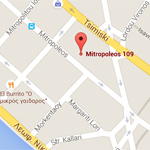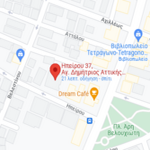(από «Λίγα λόγια για την Τέχνη και την Gestalt μέσα από την οπτική του Buber»)
Αποστολόπουλος, Χ. (1991). Ο Martin Buber και το Πρόβλημα του Ανθρώπου. Προϋποθέσεις, Δομές και Όρια της Φιλοσοφικής Ανθρωπολογίας του. Αθήνα: Εκδόσεις Gutenberg.
Buber, M. (1969). Between man and man. trans. R. G. Smith. London: Fontana.
Buber, M. (1975). I and thou, 2nd ed, trans. R. G. Smith. Edinburgh: T & T Clark.
(από το «Η τέχνη στη φαινομενολογία»)
Bloom, D., (2009). The phenomenological Method of Gestalt Therapy: Revisiting Husserl to Discover the “Essence” of Gestalt Therapy. Gestalt Review, 13 (3): 277-295
Kennedy, D., (2013). Healing Perception. Ravenswood Press, Australia.
Merleau – Ponty, M., (1977). Προοίμιο στη Φαινομενολογία της Αντίληψης. ΕΚΔΟΣΕΙΣ ΕΡΑΣΜΟΣ, ΑΘΗΝΑ.
Merleau – Ponty, M., (1991). Η Αμφιβολία του Σεζάν - Το μάτι και το πνεύμα. ΕΚΔΟΣΕΙΣ ΝΕΦΕΛΗ, ΑΘΗΝΑ.
Parry, J. D., (eds. 2011). Art & Phenomenology. Routledge, New York.
Ruckert, J., (2001). The space for creativity in Gestalt Therapy. Gestalt Review, 5(4): 249-255
Spagnuolo Lobb, M., Amendt – Lyon, N., (eds. 2003). Creative License: The Art of Gestalt Therapy. Springer – Verlag Wien, Austria.
(από το «Χορό»)
Behnke, Elizabeth A. (1989) “Edmund Husserl’s Contribution to Phenomenology of the Body in Ideas II” Rpt. in Issues in Husserl’s “Ideas II.” Ed. Thomas Nenon and Lester Embree. Dordrecht: Kluwer Academic Publishers, 1996, 135–60
Buber, M. (1970) I and Thou. New York: Macmillan Publishing Company
Frank, R. & La Barre, F. (2011) The first year and the rest of your life: Movement, Development and psychotherapeutic change. New York: Routledge
Halprin, A. (1995) Moving Towards Life, Five Decades of Transformational Dance. Kaplan, Hanover and London: Wesleyan University Press
Hycner, R. and Jacobs, L. (1995) The healing relationship in gestalt therapy: A dialogic/self-psychology approach. New York: The Gestalt Journal Press
Jacobs, L., Hycner, R. (2002) Relational approaches in Gestalt therapy. CA: Gestalt Press
Kepner, J. (1995) Healing tasks: Psychotherapy with adult survivors of childhood abuse. San Francisco: Jossey Bass
Kepner, J. I. (1993) Body Process. Working with the body in psychotherapy. Εκδόσεις Jossey – Bass Publishers, San Francisco.
Merleau-Ponty, M. (1965) Phenomenology of Perception. London: Routledge & Kegan Paul
Schott-Billmann, F. (1997). Χοροθεραπεία με την Πρωτόγονη Έκφραση, Εκδόσεις Τρόπος Ζωής, Αθήνα
Schott-Billmann, F. (2009). The Age-Old Power of Dance in the Service of a Therapy of Today: Dance-rhythm therapy. In S. Scoble, M. Y. Ross & C. Lapoujade (Eds.), Arts in Arts Therapies: A European Perspective. UK: ECArTE.
Schott-Billmann, F. (2015). Primitive Expression and Dance Therapy: When Dancing Heals. 1st ed. East Sussex @ New York: Routledge.
Winnicott, D. (1979) «Το παιδί, το παιχνίδι και η πραγματικότητα», Εκδόσεις Καστανιώτη, Αθήνα
Δρακοπούλου Μ., Χατζηγεωργίου Ε. (2011) «Περνώντας από τη δομή στην ανάγκη απελευθέρωσης από αυτήν. Μια μελέτη της λειτουργίας του χορού στα πλαίσια της Χορορυθμικής Θεραπείας», θεωρητική παρουσίαση στο 31ο Παγκόσμιο Συνέδριο για την Έρευνα του χορού, Διδυμότειχο.
Κωνσταντίνου, Χ. (2013) «Merleau-Ponty: Πρέπει να λερώσουμε τα χέρια». Από τη μορφή στον ολισμό: όψεις του οντολογικού προβλήματος στη φιλοσοφία του Μερλώ-Ποντύ. Αθήνα: Σπανός-Βιβλιοφιλία
Μαργαρίτη, Α. (2019) Στα συναρπαστικά μονοπάτια της Χοροθεραπείας, Εκδόσεις Πεδίο, Αθήνα.
Ταρνάρη, Μ., Χατζηγεωργίου Ε. (2015) «Κινώντας τον εαυτό- Αυτοπραγμάτωση μέσα από την κίνηση». Μια μελέτη της δουλειάς με το σώμα στη Θεραπεία Gestalt και στη Χοροθεραπεία μέσω της Πρωτόγονης Έκφρασης. Η σύνδεση των δύο διαδρομών με κοινή κατεύθυνση τον Άνθρωπο. (Αδημοσίευτη διπλωματική εργασία), Gestalt Foundation Αθήνας.
Χουιζίνγκα, Γ. (2010) Ο Άνθρωπος και το παιχνίδι, (Homo Ludens), Εκδόσεις Γνώση.
(από τα «Εικαστικά»)
Burley, T. (1998) Minds and brains for Gestalt therapists. Gestalt Review, (Vol 2), 2, 131-142.
Crotti, Ε. – Magni, Α. (2003) «Πώς ερμηνεύουμε τα παιδικά σχέδια- Η κρυφή γλώσσα των παιδιών», Εκδόσεις Καστανιώτη , Αθήνα
Dalley, T., Case, C., Schaverien, J., Weir, F., Halliday, D., Hall, N. P., Waller, D. (1996). Θεραπεία μέσω τέχνης. Ελληνικά Γράμματα: Αθήνα, 1996.
De Meredieu, F. (1981). Το παιδικό σχέδιο. Αθήνα: Υποδομή.
Jennings, S., & Minde, A. (1996). Οι μάσκες της ψυχής: Εικαστικά και θέατρο στην θεραπεία. Ελληνικά Γράμματα: Αθήνα.
Kellogg, R. (1969). Analyzing children’s art. Palo Alto: Mayfield.
Κρότι, Ε., & Μάνι, Α. (2003). Πώς να ερμηνεύσουμε τα παιδικά σχέδια. Η κρυφή γλώσσα των παιδιών. Αθήνα: Καστανιώτης.
Malchiodi, C. A. (1998). The art therapy source book. Los Angeles CA: Lowell House.
Malchiodi, C. A. (2001) Κατανοώντας τη ζωγραφική των παιδιών. (επ. εκδ. Ν.
Αναγνωστοπούλου). Αθήνα: Καστανιώτης.
Oaklander, V. A (1992). Gestalt approach with children through the use of art and creative. In E. A. Marcus. (Eds). Gestalt therapy and beyond: An integrated Mind-body approach. California: Meta, pp. 235-247.
O’Leary, E (1995). Η θεραπεία Gestalt. Αθήνα: Ελληνικά Γράμματα, 1995.
Perls, F. (1948). Theory and Technique of Personality Integration. In J. O. Stevens. (Eds), 1948. Gestalt is. New York: Bantam, 1977.
Rapp, E. (1980). Gestalt art therapy in groups. In R. Ronall & B. Feder. (Eds). Beyond the Hot seat. New York: Brunner & Mazel.
[http://www.behaviour.net/gestalt.html]. Site visited at: 18-11-2006.
Schaverien, J. (1982). Transference as an Aspect of art therapy. Inscape: Journal of BAAT, 1982.
Shaw, G. (2006). Patients at an Exhibition (Focus on Art Therapy). Neurology Now, (Vol 2), 6, p. 28-30, 2006.
Silver, R. A. (2008). Stimulus drawings and techniques in therapy. Development and Assessment Albin Press, Mamaroneck: New York, 1991. Site visited at: 3-1-2008.
Stahel, Ν. (1987). Tο σχέδιο ως έκφραση ψυχικών διαταραχών. Εκδ. Επικαιρότητα, μτφ. Λαμπράκη – Παγάνου Αλεξάνδρα, Αθήνα, 1987.
Tomas,G.V. & Silk, A.M.J.(2000). Η ψυχολογία του παιδικού σχεδίου. Αθήνα:
Καστανιώτη
Yontef, G. M., & Simkins, J. S. (1981). Gestalt therapy an introduction.
Zinker, J. (1971) Dreamwork as theatre. Voices. 7, 2, 18-21.
Zinker, J. (1974). Gestalt Therapy is permission to be creative: A sermon in praise of the use of experiment in Gestalt therapy. Voices. 9, 4, 75, 1974.
Zinker, J. Creative Process in Gestalt Therapy. New York: Brunner & Mazel, 1977.
Ζάχαρης, Δ. (1997). Η εξέλιξη της παιδικής ιχνογραφίας. Ιωάννινα: Πανεπιστήμιο Ιωαννίνων.
Κακίση- Παναγόπουλου, Λ. (2006). «Και όμως ζωγραφίζουν – η ζωγραφική των παιδιών και ο κόσμος τους», Εκδόσεις ΣΥΜΜΕΤΡΙΑ , Αθήνα
Κάσσα, Ο. (2004). «Θεραπεύοντας την ψυχολογία των παιδιών με τα χρώματα». Παράθυρο στην εκπαίδευση του παιδιού, τεύχος 27.
Κουνενού, Κ. (2007). Η Αξιολόγηση του παιδικού ιχνογραφήματος. Αθήνα.
Μπέλλας, Θ. (1996). Το ιχνογράφημα ως μέσο διαγνωστικό της προσωπικότητας. Αθήνα: Καστανιώτη.
Παπανούτσου, Ε. (1976). Αισθητική. Αθήνα: Εκδ. Ίκαρος, 1976.
(από το «Θέατρο Κούκλας και Αντικειμένων»)
Bernier, M., O’Hare, J. (Ed.) (2005). Puppetry in education and therapy: unlocking doors to the mind and heart. Bloomington: Authorhouse
Greaves, A., Camic, P. et al. (2012). A multiple single case design study of group therapeutic puppetry with people with severe mental illness. In: The Arts in Psychotherapy, 39: 251-261
Jurkowski, H. (1988). Aspects of puppet theatre: a collection of essays. London: Puppet Centre Trust
Kleist, H. (1982). Οι μαριονέτες. Και μια μελέτη του Bernard Dort. Αθήνα: Άγρα
Kroflin, L. (Eds). (2022). Applied Puppetry in Education, Development, and Therapy: Theory and Practice. Download here: https://www.unima.org/wp-
content/uploads/2022/07/Applied-Puppetry-FINAL-za-web.pdf
Marshall, K. (2013). Puppetry in Dementia Care: Connecting Through Creativity and Joy.
Meschke, M. (1996). Ηθική και Αισθητική. Download here: https://filedn.eu/l15WqbijnHt8P1H1GWqJUoj/festival.unimahellas.org/pdf/ethics.pdf
Schumann, P. (1990). The radicality of the Puppet Theatre. Vermont.
Smith. M., Kroflin. L., et al. (2022). Applied Puppetry in Education, Development, and Therapy: Theory and Practice. Download here: http://www.uaos.unios.hr/wp- content/uploads/2022/02/Applied-Puppetry-FINAL-za-web.pdf
Spagnuolo Lobb, M., Amendt-Lyon, N. (Eds). (2003). Creative License. The Art of Gestalt Therapy. Springer-Verlag Wien GmbH.
Zinker, J. (1978). Creative Process in Gestalt Therapy. Vintage Books. New York.
Κοντογιάννη, Α. (1992) Κουκλο-θέατρο σκιών. Αθήνα: Άλκηστις
Μαρκόπουλος, Σ. (2013). Η θεατρική κούκλα στον ανθρώπινο πολιτισμό. Κιλκίς: Διεθνές Φεστιβάλ Κουκλοθεάτρου και Παντομίμας Κιλκίς. Download here:
Παρούση, Α. (2012) Κουκλοθέατρο στην εκπαίδευση. Εκπαίδευση στο κουκλοθέατρο. Αθήνα: Πλέθρον
Παρούση. Α., Λενακάκης. Α. (2021). Current trends in Greek puppet theatre. An informal form of education? Download here: https://ebooks.epublishing.ekt.gr/index.php/ecdnkua
Συλλογικό. Kominz., Μ. (Eds). (1990) The language of the puppet. Vancouver: Pacific Puppetry Center Press
Συλλογικό. Waskiel, Μ. (Επιμ.) (1999). Σύγχρονες τάσεις στην έρευνα του παγκόσμιου κουκλοθεάτρου. Αθήνα: Ελληνικό Κέντρο Κουκλοθεάτρου και Καραγκιόζη UNIMA-ΕΛΛΑΣ
Συλλογικό. Πετσόπουλος, Σ. (Επιμ.) (1996). Κούκλες και παιχνίδια. Δοκίμια. Αθήνα: Άγρα
(από το «Η Εικαστική Θεραπεία με την προσέγγιση Gestalt σε άτομα με άνοια και νόσο Alzheimer και σε άτομα με καρκίνο του μαστού»)
Jung, C.G. (1978). Man and His Symbols. London: Picador.
Malchiodi, C. A. (1998). The art therapy source book. Los Angeles CA: Lowell House.
Muir, M. (2002). Gestalt Art Therapy for people with dementia. International Academy for Design and Health: Newcastle Australia.
Rapp, E. (1980). Gestalt art therapy in groups. Στο R. Ronall., & B. Feder. (Eds). Beyond the Hot Seat. New York: Brunner & Mazel; 86-104.
Rhyne, J. (1973). The Gestalt Art Therapy Experience. Brooks/Cole: Monterey, CA.
Rhyne, J. (1973a). The Gestalt approach to experience art and art therapy. American Journal of Art Therapy. 2,(4), 237-248.
Rhyne, J. (1973b). The Gestalt Art Experience: Patterns that connect. Chicago: Magnolia Street Publishers, 1996.
Σιαμπάνη, Κ. (2010). Εικαστική Θεραπεία στην άνοια. Στο Μ. Τσολάκη & Φ. Κουντή. Εφαρμοσμένα Θέματα Παθολογικού Γήρατος. Θεσσαλονίκη: Ελληνική Εταιρεία Νόσου Alzheimer και Συγγενών Διαταραχών; 137-151.
Σιαμπάνη, Κ. (2011). Η συμβολή της (Εικαστικής) τέχνης στη συναισθηματική κατάσταση των ηλικιωμένων. 7ο Πανελλήνιο Ιατρικό-Διεπιστημονικό Συνέδριο Νόσου Alzheimer και Συγγενών Διαταραχών, (σελ. 94-102). Θεσσαλονίκη: Πανελλήνιο Ινστιτούτο Νευροεκφυλιστικών Νοσημάτων σε συνεργασία με την Ελληνική Εταιρεία Νόσου Alzheimer και Συγγενών Διαταραχών.
Σιαμπάνη, Κ. & Τσολάκη, Μ. (2014). Βαδίζοντας Μαζί. Η οπτική της θεραπείας Gestalt στην άνοια. Θεσσαλονίκη: Ελληνική Εταιρεία Νόσου Alzheimer και Συγγενών Διαταραχών
Vich, M., & Rhyne, J. (1967). Psychological growth and use of art materials: Small group experiments with adults. Journal of Humanistic Pshchology, 7(1), 163-170.
Zinker, J. (1977). Creative Process in Gestalt Therapy. New York: Brunner & Mazel.
(από το «Πολώσεις και Εκφραστικές Τέχνες»)
Polsters, E. & M. (1973). Gestalt Therapy Integrated. New York: Brunner/Mazel
- chapter 6: Resistance and Beyond, Composition
- chapter 9: Experiment, Enactment of a Polarity
Zinker, J. C. (1977). Creative Process in Gestalt Therapy. New York: Vintage Books
- chapter 8: Polarities and Conflicts
Kepner, J. I. (1987). Body Process: Working with the Body in Psychotherapy. New York: Gardner Press
Spagnuolo Lobb, M. (2013). From the need for aggression to the need for rootedness: A Gestalt postmodern clinical and social perspective on conflict. British Gestalt Journal, 22(2), 32-39
Benjamin, J. (1995). Recognition and destruction: An outline of intersubjectivity. In Like Subjects, Love Objects: Essays on Recognition and Sexual Difference. New Haven: Yale University Press. This paper is available webinar at Psyche Matters with the permission of Yale University Press
Green, A. (2002). A Dual Conception of Narcissism: Positive and Negative Organizations. Psychoanalytic Quarterly 71:631-649
Malchiodi, C., A. (2020). Trauma and Expressive Arts Therapy: Brain, Body and Imagination in the healing process.
Halprin, D. (2002). The expressive body in Life, Art and Therapy: Working with movement, Metaphor and Meaning.
(από το «Ψυχοπαθολογία και Τέχνη»)
Ching, Fr. D.K., (1990). Drawing a creative process. Van Nostrand Reinhold NY.
Fagan J., Sheperd I., (1970). Gestalt Therapy Bow. Theory/ Techniques/ Applications. Harper & Row, PUBLISHERS.
Nairne, J., (2000). The Adaptive Mind. WADSWORTH.
Orange, M. D., (2011). The Suffering Stranger Hermeneutics for every day clinical practice. Routledge Taylor & Francis Group. NY.
Wheeler, G., Mc Conville, M., (2002). The Heart of Development. The Analytic Press, Inc.
Γιαμαρέλου, Ι., (2022). Η ροή της εμπειρίας και η αναγκαιότητα των βραχύχρονων ομάδων στο σημερινό γίγνεσθαι. ΕΚΔΟΣΕΙΣ ΑΡΜΟΣ.
Γκάνταμερ, Χ. Γκ., (2003). Η απαρχή της φιλοσοφίας. ΕΚΔΟΣΕΙΣ ΠΑΤΑΚΗ.
Κερένυϊ, Κ., (2017). Η μυθολογία των Ελλήνων. ΒΙΒΛΙΟΠΩΛΕΙΟ ΤΗΣ ΕΣΤΙΑΣ.
Παπαδόπουλος, Π., (2010). Το σχέδιο Σωτηρία. Μνήμη και ασθένεια στον εικαστικό λόγο. ΕΚΔΟΣΕΙΣ ΤΕΧΝΗΣ ΟΙΣΤΡΟΣ.
Τερζόπουλος, Θ. & ΘΕΑΤΡΟ ΑΤΤΙΣ, (2000). Αναδρομή, Μέθοδος, Σχόλια. ΕΚΔΟΣΕΙΣ ΑΓΡΑ.
(από το «Φωτογραφία»)
Adler N (2017) Who Posts Selfies and Why? Personality, Attachment Style, and Mentalization as Predictors of Selfie Posting on social media. CUNY: Academic Works.
Amerikaner, M., Schauble, P., & Ziller, R. (1980). Images: The use of photographs in personal counseling. Personnel and Guidance Journal, 59, 68–73.
Amurao, R., & Castronuevo, E. (2016). Selfie Behavior and Narcissism among selected females. The Bedan Journal of Psychology, Vol. 1, p.p. 24-33.
Barbee, M. (2002). A visual-narrative approach to understanding transsexual identity. Art Therapy: Journal of the American Art Association, 19(2), 53-62.
Barthes, R. (1983). Ο Φωτεινός Θάλαμος. Σημειώσεις για τη Φωτογραφία (μτφ. Γ. Κρητικός). Αθήνα: Κέδρος. (έτος έκδοσης πρωτότυπου:1980).
Barthes, R. (2019). Εικόνα – Μουσική –Κείμενο. Αθήνα: Πλεθρον.
Barry, C. T., Doucette, H., Loflin, D. C., Rivera-Hudson, N., & Herrington, L. L. (2015). “Let Me Take a Selfie”: Associations Between Self- Photography, Narcissism, and Self-Esteem, Psychology of Popular Media Culture. June 29, p.p. 1-13. Advance webminar publication. http://dx.doi.org/10.1037/ppm0000089
Betensky, M. (1973). Self-discovery through self-expression. Springfield, IL: Charles C Thomas.
Biolcati, R., & Passini, S. (2018). Narcissism and self-esteem: Different motivations for selfie posting behaviors, Cogent Psychology, 5: 1437012.
Bordwell, D., & Thompson Κ. (2003). Film History. An Introduction, Νέα Υόρκη: McGraw-Hill.
Coetzer, R. (2015). A picture tells a lifetime of words: Photography, psychotherapy, and brain injury rehabilitation. Neuro-Disability & Psychotherapy 3(1), p.p. 1–10.
Cole, T. (2016). Memories of Things Unseen. The New York Times Magazine, 10, (14).
Rudi Coetzer A picture tells a lifetime of words: Photography, psychotherapy, and brain injury rehabilitation, Georgia School of Tech Interactive Computing. (2017). Selfies: We Love How We Look and We’re Here to Show You. https://www.ic.gatech.edu/news/592858/selfies-we-love-how-we-look-and-were-here-show-you
Gough, M.L.K. (1999). Remembrance photographs: A caregiver’s gift for the families of infants who die. In S.L. Bertman (Ed.), Grief and the healing arts: Creativity as therapy. Amityville, New York: Baywood.
Γκουτζιώτη, Ι. (2009). Πείραμα, Τεχνικές και Δομημένες Ασκήσεις στην Θεραπευτική Σχέση Gestalt. Θεσσαλονίκη. Διπλωματική εργασία.
Graf, N.M., & Miller, E. (2006). The use of phototherapy in group treatment for persons who are chemically dependent. Rehabilitation Counselling Bulletin, 49 (3), 166-181.
DeCoster, V. A., & Dickerson, J. (2014). The therapeutic use of photography in clinical social work: Evidence-based best practices. Social Work in Mental Health, 12(1), 119.
Dhir, A., Pallesen A., Torsheim T., & Andreassen, C. (2016). Do age and gender differences exist in selfie-related behaviours? Computers in Human Behavior, Vol. 63, (10), p.p. 549-555.
Εμπειρίκος, Α. (2004). Γραπτά ή προσωπική μυθολογία (1936-1946). Αθήνα: Εκδόσεις: Άγρα.
Ziller, R. C., Vera, H., & Camacho de Santoyo, C. (1981). Federico: Understanding a child through autophotography. Childhood Education, 57, 271–275.
Halkola, U. (2009). A photograph as a therapeutic experience. European Journal of Psychotherapy and Counselling, V11 (1), p.21-33.
Howarth, S. (2022). The Mindful Photographer. London: Thames and Hudson.
Johansson, A. (2017). The ‘Me’ in Meaning: People high in narcissism find comfort and meaning in selfie likes. A THESIS submitted in partial fulfillment of the requirements for the degree of MASTER OF SCIENCE Department of Psychology College of Science University of Canterbury.
Καλλιγά, Λ. (2008). Ότι έρχεται στο φως. Αθήνα: Εκδόσεις Άγρα.
Καντάβα, Ε. (2014). Λέξεις Φωτός: Θέσεις για τη φωτογραφία της ιστορίας.
Αθήνα: νήσος.
Καρασαχινίδης, Π., Βοριά, Π., & Γιαλαουσίδης, Μ. (2010). Ναρκισσισμός και αντιλήψεις για το δεσμό στην ενήλικη ζωή. Παιδί και Έφηβος: Ψυχική Υγεία και Ψυχοπαθολογία, τομ.12 τευχ.1 [2010], σελ. 60-78.
Kennicott, P. (2020). Review of ‘Dorothea Lange: Words and Pictures’ at the Museum of Modern Art. The Washington Post, 2, p.20.
Kessel, I. (2017). Selfies are all about appearance. https://www.statista.com/chart/10046/selfies-are-all-about-appearance/
Knauer, K. (1999). Time – Great Images of the 20 th Century: New York: Time Books.
Kings, C. A., Knight, T., & Moulding, R. (2018). Using photoelicitation and interpretative phenomenological analysis to explore possessions as links to self-concept and the identities of others in hoarding disorder. Psychology and Psychotherapy: Theory, Research and Practice. Advance online publication. doi:10.1111/papt.12211.
Krauss, D. (1981). On photography: Uses in psychotherapy. Paper presented at the Annual Convention of the American Psychological Association, Los Angeles, CA. (ERIC Document Re-production Service No. ED 209 628.
Κωνσταντινίδου, Χρ. (2010). Φωτογραφία – Νόημα – Συγκείμενο: Η κατασκευή της ετερότητας στους Τσιγγάνους του Josef Koudelka. Αθήνα: νήσος.
Landgrave, H. (1993). Magazine Photo: A Multicultural Assessment and Treatment Technique, New York: Brunner/Mazel.
Λυκάκης, Μ. (2011). Ψηφιακή Φωτογραφία (Photoshop – Lightroom). Αθήνα: Ακαδημία Δημιουργικής Φωτογραφίας.
Manwell, L., Tadros, M., Ciccarelli, T., & Eikelboom, R. (2022). Digital dementia in the internet generation: excessive screen time during brain development will increase the risk of Alzheimer’s disease and related dementias in adulthood. Journal Integr. Neuroscience. 2022 vol. 21(1), 1-15.
Martin, R. (2009). Inhabiting the image: Phototherapy, therapy and re-enactment phototherapy. European Journal of Psychotherapy and Counselling. Vol. 11, No 1, p. 35-49.
Μερλώ-Ποντύ, M. (1991). Η Αμφιβολία του Σεζάν (μτφ. Α. Μουρίκη). Αθήνα: Νεφέλη. (έτος έκδοσης πρωτοτύπου: 1948).
Μερλώ-Ποντύ, Μ. (2016). Φαινομενολογία της Αντίληψης. Αθήνα: Εκδόσεις νήσος.
Moon, J.H., Lee, E., Lee, J-A., Choi, T-R., & Sung, Y. (2016). The role of narcissism in self-promotion on Instagram. Personality and Individuals Differences, 101, p. 22-25.
Moustakas, C. (1994). Phenomenological research methods. London: Sage Publications.
Ξανθάκης Α. (1994). Ιστορία της Ελληνικής Φωτογραφίας 1939-1960. Αθήνα: Εκδόσεις Καστανιώτη.
Oaklander, V. (1978). Windows to our children. Moab, UT: Real People Press.
Opree, S., & Kühne, R. (2016). Generation Me in the Spotlight: Linking Reality TV to Materialism, Entitlement, and Narcissism. Mass Communication and Society,19:800–819.
Paintner, C.V. (2007). The Relationship Between Spirituality and Artistic Expression: Cultivating the Capacity for Imagining. Spirituality in Higher Education a National Study of College Students, Search for Meaning and Purpose, 3(2):1-6.
Πασχαλίδης, Γ. (2012). Τα Νοήματα της Φωτογραφίας. Θεσσαλονίκη: University Studio Press.
Perls, F., Hefferline, R., & Goodman, P. (1951). Gestalt Therapy: Excitement and Growth in the Human Personality. New York: The Guernsey Press Co. Ltd.
Perls, F. (1969). Gestalt therapy verbatim. Lafayette, CA: Real People
Perls, F. (1973). The Gestalt Approach and Eye Witness to Therapy. University of Michigan: Science and Behavior Books.
Pettersson, M. (2011). Depictive Traces on the Phenomenology of Photography. Journal of Aesthetics and Art Criticism 69 (2):185-196.
Pissini, F. (2013). Phototherapy for dummies. The therapeutic power of self- portraits. https://www.slideshare.net/FabioPiccini/moscow-1-41817928
Prins, L. (2012). Photograph as catalyst: An exploration of client experiences with photographs in therapy. Submitted in partial fulfillment of the MA in Transpersonal Counselling and Psychotherapy. Centre for Counseling and Psychotherapy Education (CCPE) in association with Northampton University.
Rhyne, J. (1973/1995). The Gestalt art experience. Monterey, CA: Brooks/Cole/Chicago: Magnolia Street.
Σακκάς, Π. (2016). Η Ψυχιατρική αλλιώς… μέσα από αληθινές ιστορίες και κυκλώματα υπολογιστών, Αθήνα: Βήτα Ιατρικές Εκδόσεις.
Saita, E., & Acquati, C. (2020). Evaluating the Framed Portrait Experience as an intervention to enhance self-efficacy and self-esteem in a sample of adolescent and young adult cancer survivors: Results of a pilot study. Journal of Adolescent and Young Adult Oncology, doi: https://doi.org/10.1089/jayao.2019.0063 (Impact factor: 2.223). Drs. Saita and Acquati equally contributed to the article.
Sandoz, C.J. (1996). Photographs as a tool in memory preservation for patients with Alzheimer’s disease. Clinical Gerontologist. 17, 69-71.
Sariñana, J. (2013). Memories, Photographs, and the Human Brain, Pet pixel. https://petapixel.com/2013/07/20/memories-photographs-and-the-humanbrain/ Date of access: 13 December 2016.
Σιαμπάνη, Κ., & Τσολάκη, Μ. (2015). Βαδίζοντας μαζί… Η θεραπεία Gestalt για ασθενείς με άνοια και τους περιθάλποντες, Θεσσαλονίκη: Ελληνική Εταιρία Νόσου Alzheimer και Συγγενών Διαταραχών.
Sitvast, J.E., & Abma, T.A. (2012). The photo-instrument as a health care intervention. Health Care Analysis, 20(2), 177-195.
Sitvast, J.E. (2011). Photography as a nursing instrument in mental health care: How to use client’s photo stories for recovery. Amsterdam: Vrije Universiteit.
Sitvast, J.E., & Abma, T.A., Widdershoven, G.A.M. (2010). Facades of suffering: Clients’ photo stories about mental illness. Archives of Psychiatric Nursing, 24(5), 349-361.
Sontag, S. (1993). Περί Φωτογραφίας. Αθήνα: Εκδόσεις του Περιοδικού Φωτογράφος.
Su-j, K. & Gyeong-suk, C. (2017). Effect of a Group Counseling Program With Phototherapyon Enhancing the Self- Perception and Self-Esteem of Female School Students. Korean Journal of Child Studies. Vol. 38, No 2, p. 177-190.
Teti, M., French, B., Kabel, A., Farnan, R. (2016). Portraits of Well-Being: Photography as a Mental Health Support for Women With HIV, Journal Creat Mental Health. 2017; 12(1): 48–61.
Τhéodoropoulou, E. (2019) ‘En crevant la peau des choses’: les ‘objets philosophiques’. Prooimion à un projet: Actes de la 1ère Biennale Internationale de Philosophie Pratique. Rodes: Ε.Ε.Π.Φ., p.p. 530-567, [disponible en ligne]: http://practphilab.aegean.gr /proceedings/).
Trombeta, G., Scienza, L., & D. dos Rei, M. (2022). Using photographic methods in the mental health field: An integrative review. Psicologia: Teoria e Prática, 24(1), 1–18.
Upton, C., Diambra, J., Brott, P., & Budesa, Z. (2023). Photography as a Wellness Tool for Counselors-in-Training. Journal of Educational Research & Practice, Volume 13, Issue 1, Pages 1–1
Weiser, J. (2020). Phototherapy Centre Vancouver, 2020. History and Development of Phototherapy. [Online] Available on: [22 February 2020]:https://phototherapytherapeuticphotography.files.wordpress.com/2015/01/history__development_of_phototherapy.pdf
Weiser, J. (2010). Using Self-Portrait Photographs During Therapy Sessions to Help People Improve Their Lives.
https://phototherapytherapeuticphotography.files.wordpress.com/2014/10/weiser-self-portraits piccini book.pdf
Weiser, J. (2014). Establishing the Framework for Using Photos in Art Therapy (and Other Therapies) Practices. Arteterapia Papeles de Arteterapia y educación artística par la inclusion social, 9:159-190.
Weiser, J. (2004). Phototherapy techniques in counseling and therapy: Using ordinary snapshots and photo-interactions to help clients heal their lives. The Canadian Art Therapy Association Journal, fall, 17:2, 23-53.
Weiser, J. (1999). PhotoTherapy Techniques: Exploring the Secrets of Personal Snapshots and Family Albums. Vancouver: PhotoTherapy Center.
Wickel, T. (2015). Narcissism and Social Networking Sites: The Act of Taking Selfies. The Elon Journal of Undergraduate Research in Communications, Vol. 6, No. 1, Spring.
Williams, A.A., & Marquez, B.A. (2015). The lonely selfie king: Selfies and the Conspicuous Prosumption of Gender and Race, International Journal of Communication, 9, p. 1775–1787.
Yalom I. (2020). Υπαρξιακή Ψυχοθεραπεία. Αθήνα: Εκδόσεις Άγρα.
Youngsoo, S., Minji, K., Charen, I., & Sang, C. (2017). Selfie and self: The effect of selfies on self-esteem and social sensitivity. Journal of Personality and Individual Differences, Vol. 111, 7 (1), p.p. 139-145.
France, M. H., & Allen, E. G. (1997). Using art: A gestalt counselling strategy for working with disruptive clients. Guidance and Counselling, 12(4), 24–26.
Francesetti, G., Gecele, M., & J. Roubal. (2013). Gestalt Therapy in Clinical Practice from Psychopathology to the Aesthetics of Contact. Milano: Instituto di Gestalt HCC Italy.
(από το «Αισθητηριακή θεραπεία»)
Blom R. (2006). The Handbook of Gestalt Play Therapy: Practical Guidelines for Child Therapists. London & Philadelphia: Jessica Kingsley Publisher
Oaklander, V. (2001). Gestalt play therapy. International Journal of Play Therapy, 10 (2), 45-55






